I usually read and research a bit before I write about anyone – mostly just to find out what others think about them. I did the same with Sarnath Bannerjee, a friend from my Business India TV days.
Have to admit, I was a bit surprised.
Most interviewers have described him as a difficult subject, respectfully musing about his lack of coherence of thought (during the interview) or used extremely tough (and unremittingly scholastic) terminologies to describe his work (and personality).
Duh!!! Is it really Sarnath they are talking about?
To begin with, I am taking it for granted that most people interested to read this post have at least read one book of him – from Corridor to Doab Dil, it’s been close to 20 years now, with many popular books, conspicuous by their difference in storytelling.
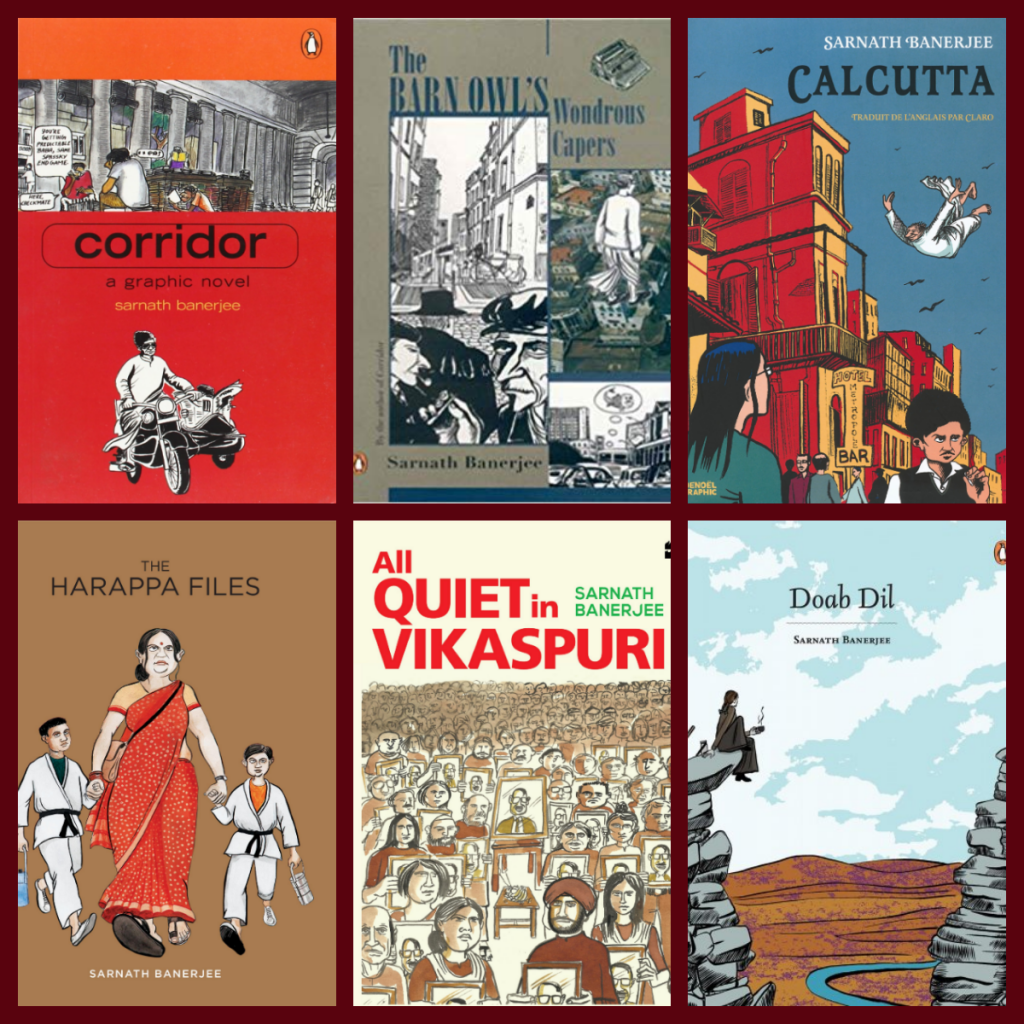
His publishers call them Graphic Novels; Sarnath is credited for making this ‘picture-story’ format publisher worthy in India.
I won’t give his career details here.
Neither will I try remembering what he was like in his salad days, while we were in the documentaries division together in TVI, Business India Television.
Honestly speaking, I don’t remember much about even myself from those days.
I would rather like to tell you about how I interact with his books; maybe share my personal views about how to read and enjoy his work.
First of all, I do not try to understand Sarnath, and never try to peel off the layers in his texts and images in search of some hidden meanings. I know, he simply means what I (and you) would understand it to be.
Sarnath is playful and a great lover of spontaneity. He lives in his mind, so he will play with your mind from therein, and expect you to respond, on equal terms.
Rely on your own memories and associations rather than his – to enjoy his work.
If you have not exactly read the same texts that he has read, or couldn’t ‘catch’ some of his references, doesn’t matter. Catch the context, find your own references – and relate. Don’t worry about the story he wants to say; create your own story ‘with’ him.
His seeming lack of coherence is much like a Kolkata ‘adda’ session – where you are free to jump from topic to topic, and devil may care.
Those sessions are not format bound; they are more about mixed-up chronologies; fragmented and sometimes totally imagined narratives in the ‘what-do-you-know’ garb of a ‘factual’ claim; lack of structure in terms of endings and beginnings; story within the story beyond the story; allusions that has no job being there, but strangely, make perfect sense within the larger ‘tonal’ context.
So what do you do when you are in an ‘adda’ session?
Simple, you interact, on equal terms.
Yes, he documents tones rather than information – and presents them in a mash-up of dry wit, subliminal satire and depicts a largely grey-scale universe.
Yes, his storytelling is to some extent autobiographical – but don’t try to find ‘him’ in it. Rather, find yourself. Treat it as your own biography. Don’t think about the book, but think with the book. Think about people you have known and experiences you have lived and co-relate them to the ideas in his illustrations and texts.
It’s a friend talking to you; with him learn to laugh about your own being – and nothingness; accept your overall humility of existence and futility of claims-mongering and Sarnath will not just make perfect sense, but become your closet philosopher.
I have an inkling that it’s this long standing search for absolute ‘adda’ that has inspired Sarnath to write ‘Doab Dil’, his latest book, which he describes as ‘hanging somewhere in-between fact and fiction’.
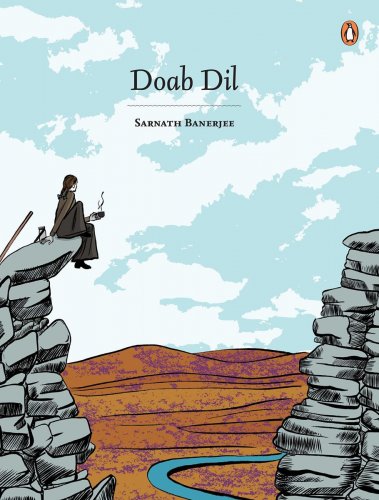
DOAB DIL: IS IT A GRAPHIC ‘NON-FICTION’??
In Doab Dil, despite its evidently unique storytelling , Sarnath says he is doing nothing new. I understood that when he explained how and where the format came from – when we spoke about age-old and time-tested traditions of picture books and illuminated manuscripts and image-tools used in theater.
Let me simplify that for you. This one is for my Bengali reading friends.
When you recollect “Abol Tabol” by Sukumar Roy, or “Feluda” in Bengali (original versions) or even Thakurma’r Jhuli – what comes to the top of your mind?
For me, it’s not just the text, but the fabulous illustrations that went with it.
My top favourites are ‘Khuror Kol’ and ‘Bidye-bojhai Babumoshai’ for personal reasons – but the point is – it’s simply not possible to relate to those texts without those pictures. At least not for me, and I am sure many would agree.
The same stands true for the original illustrations of Alice in Wonderland; a whole lot of Dickens and Mark Twain stories; Three men in a Boat; even those Russia published folk-tales that we used to read in our childhood, where the hero was always named Ivan…
That combination of text with images always added layers to the storytelling, and that’s what made them special.
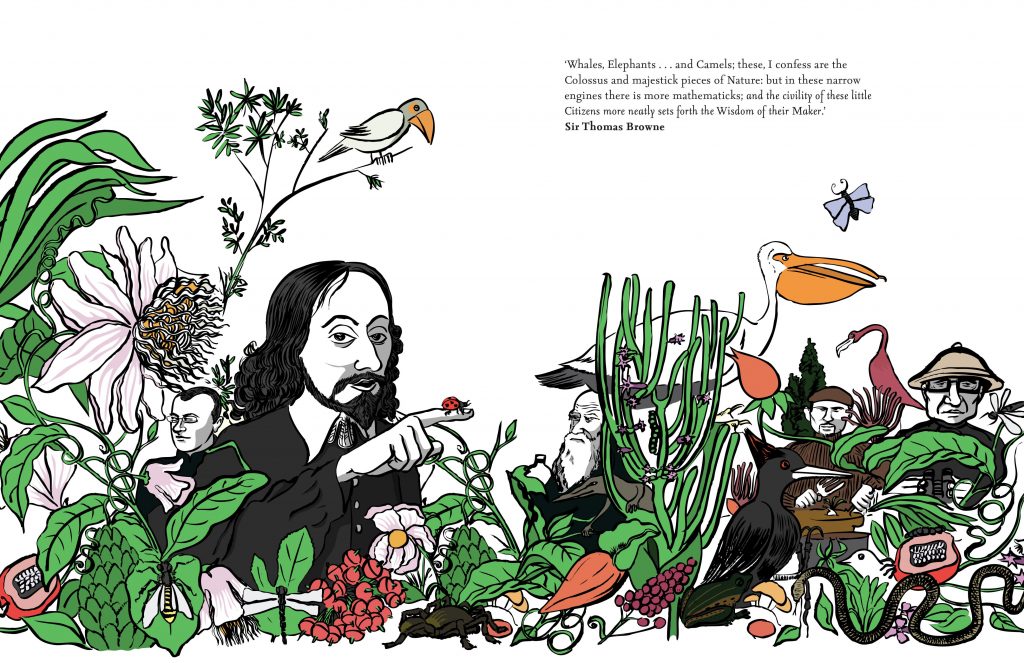
THE RICH HISTORY OF PICTURE STORIES
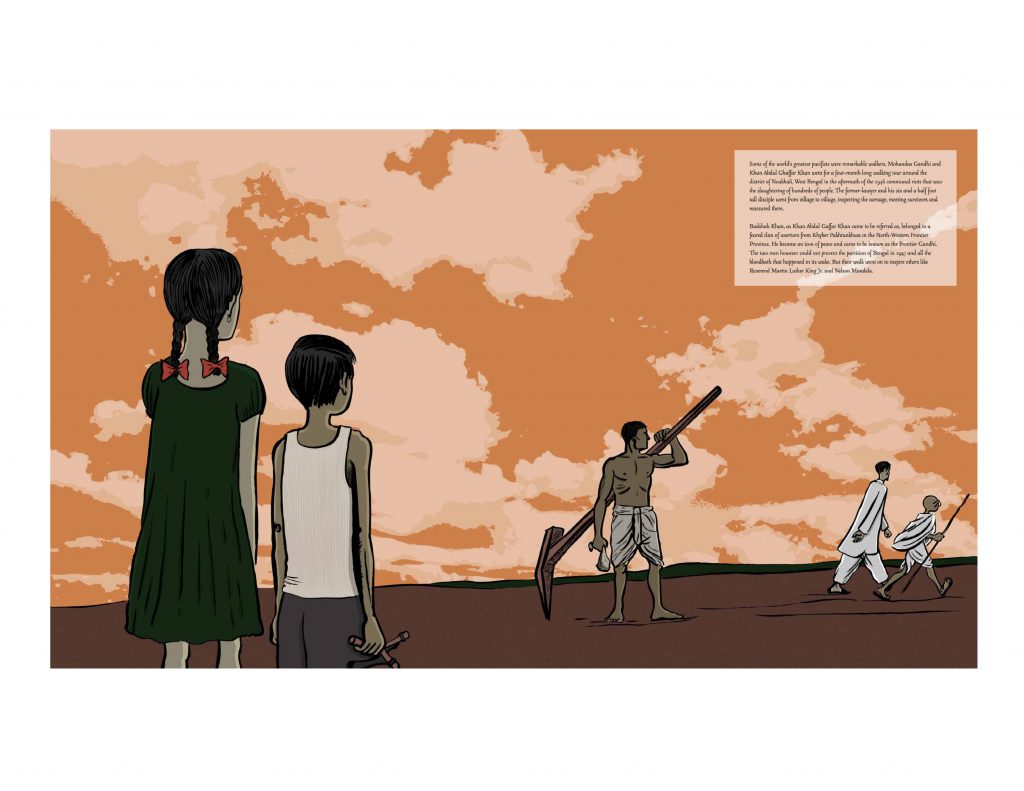
Maybe we should now take a brief peek into the creative mind of Sarnath; for once, and for all, it’s time to claim that there’s a method in it.
“IT’S LIKE CREATING A MUSICAL COMPOSITION”
I have always been somewhat besotted with his characters, particularly those from his first work “Corridor”. More specifically ‘Digital Dutta’ – a voracious reader, a Marxist who lives in his head, and suffers from gas induced insomnia.
Now where have I seen him?
Not in the mirror, I hope.
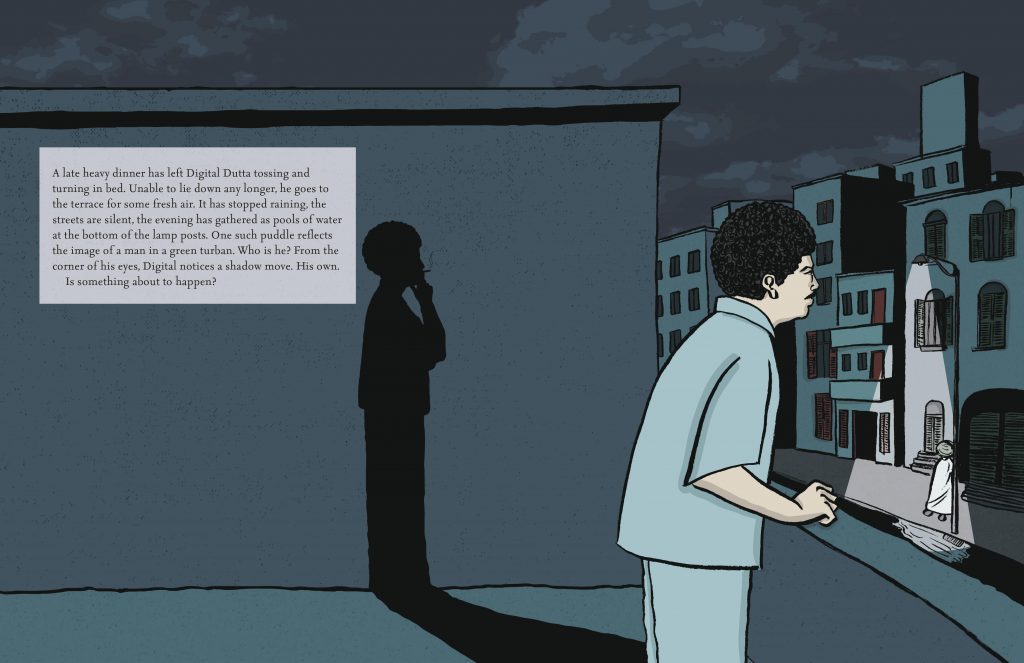
DIGITAL DUTTA: JOURNEY ACROSS TIME, AND BOOKS
Hmmm…
I thought, while we are at it, I should now ask him a question that rather baffles me. I should ask – what is the difference between so called ‘Graphic Novels’ and ‘Comics’? Is there really any need to create such distinctions?
Comics are for children and graphic novels for adults – you say!!
Really!!! Have you read Daredevil??
‘GRAPHIC NOVEL’ IS A MARKETING PLOY
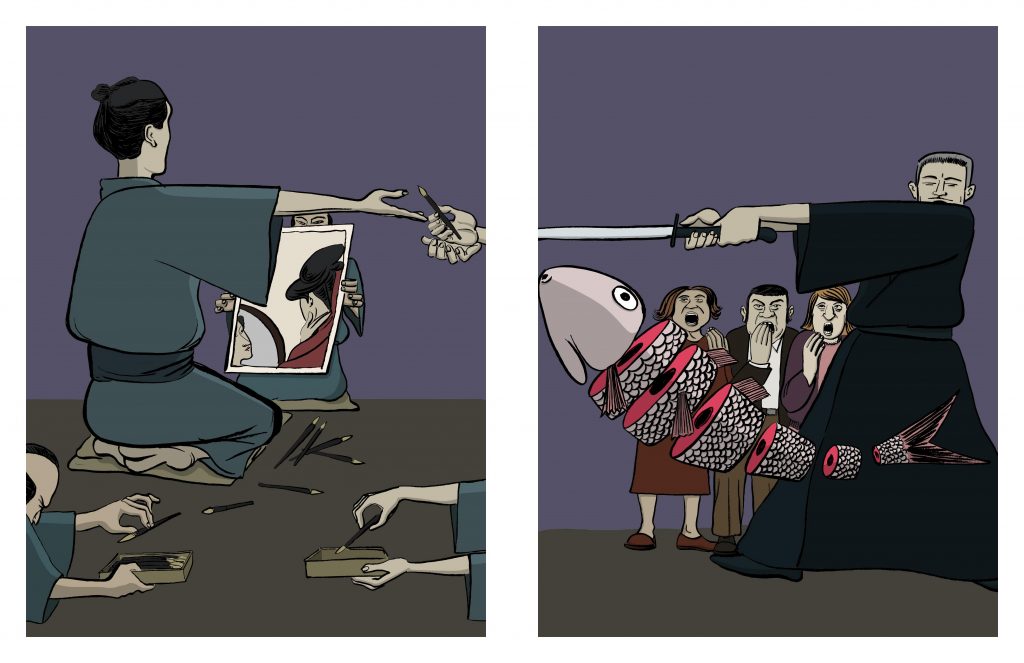
“The action becomes second nature. The form masters the individual rather than the other way around.”
Finally, a few words of advice from Sarnath for my young readers.
For those out there who want to get into the realm of writing ‘picture-books’ – here’s a low-down. In a single phrase, it would be – culture yourself; what’s inside you will come out in your work.
“YOUR WORK WILL REFLECT YOUR INSIDE“
Those of you who would want to read the complete interview, you can find it at HERE
Just a note of caution though; the entire conversation was originally in Bengali, since Sarnath wanted this post to be in Bengali and both of us are more comfortable talking in that language. I found it quite tough to translate sacrosanct bong ideas like ‘Adikkhyeta’, ‘Pasher baarir boudi’ and ‘Akath Mukkhu’ into English.
I will get my Bengali readers a complete transcription of that Bangla interview soon.
Also, just to make you jealous, I did get to see the first draft of Sarnath’s ‘Arogya Niketan’ picture-book – and it’s a real pleasure in the making.
I am excited about its eventual release; you should be too. I am sure it will start yet another long sparring session of ‘adda’ – with and within your mind.
Sarnath, who stays in Berlin now, might come to Delhi during Christmas.
By then, I am sure, ‘Arogya Niketan’ would have travelled some more distance. I might just get the opportunity again to tag along its evolving journey.
That would be fun.
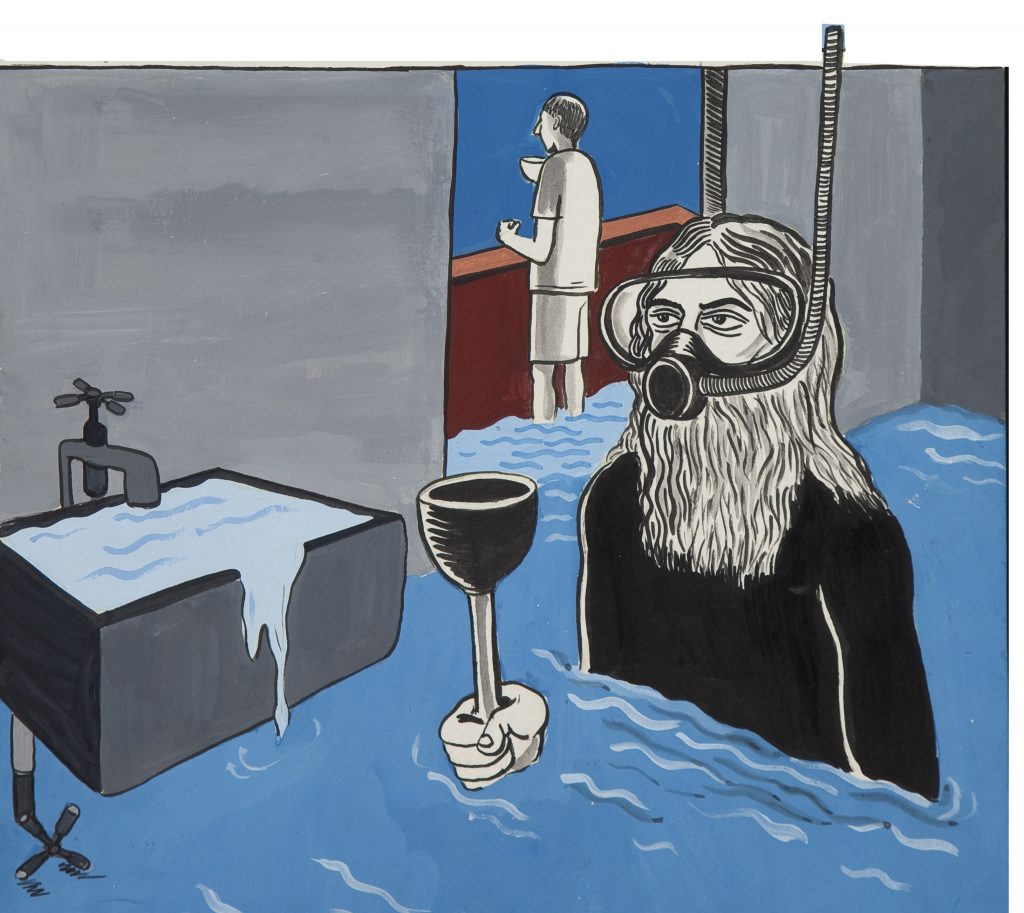

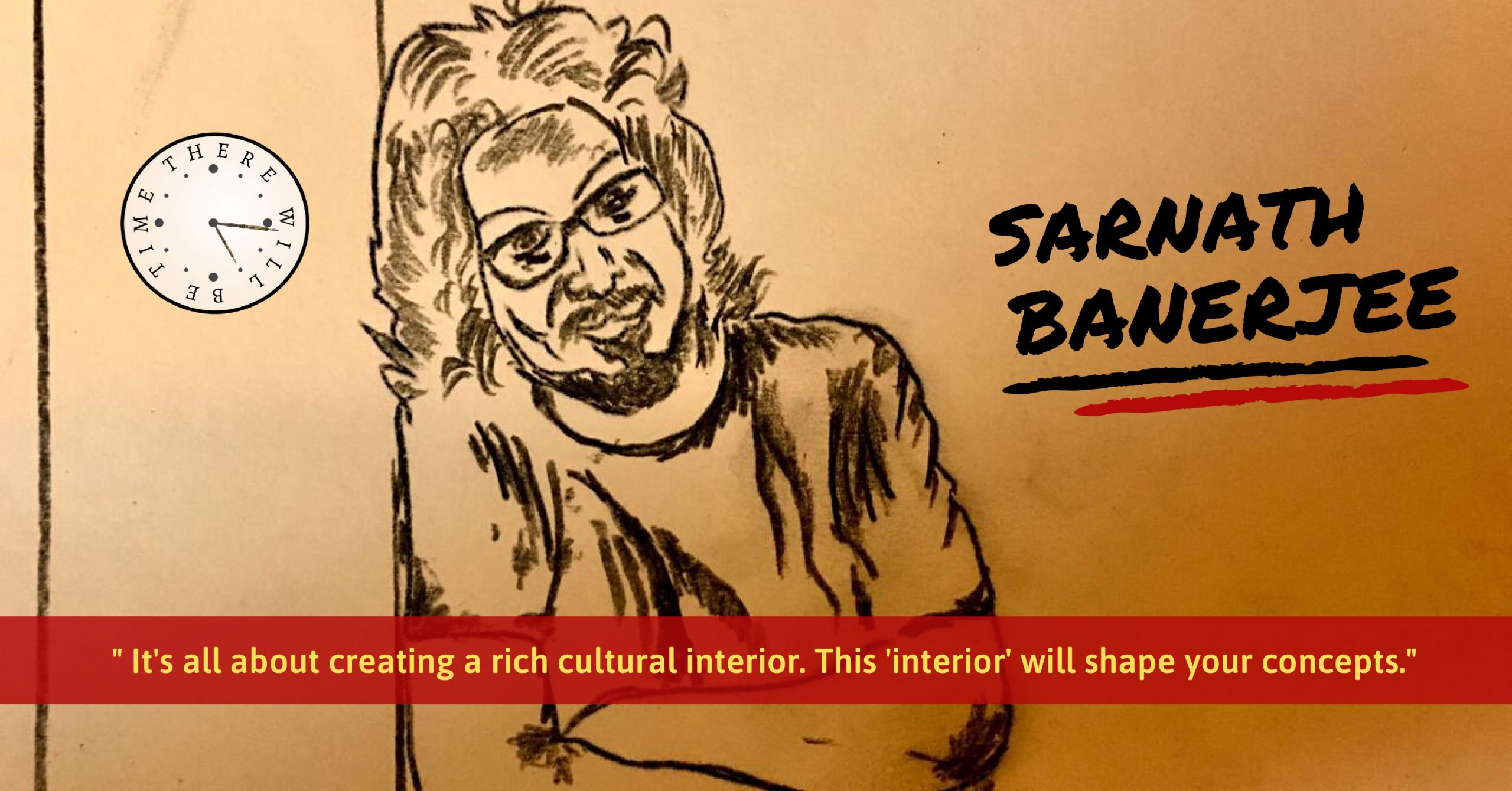
What a delightful post! Excellent sketches and that includes yours too…
Lovely read. I have never gotten my hands on Saranath Babu’s books,now I will.
Start with Corridor. It’s delightfully irreverent.
Like!! Great article post.Really thank you! Really Cool.